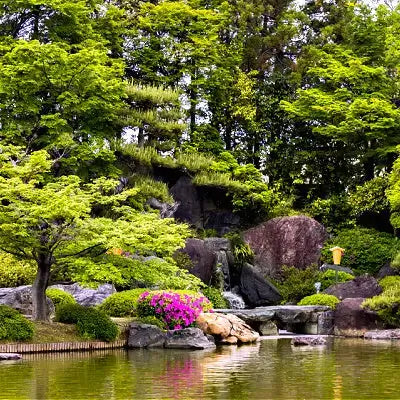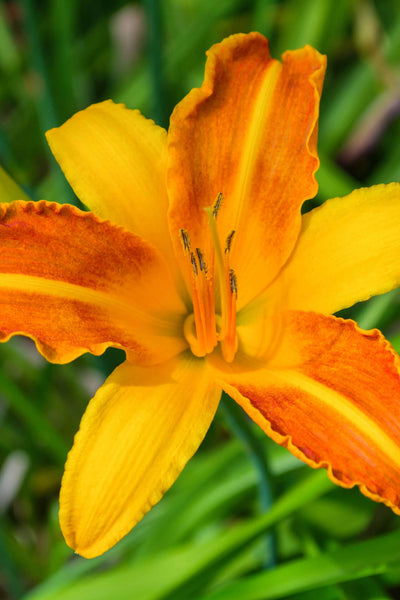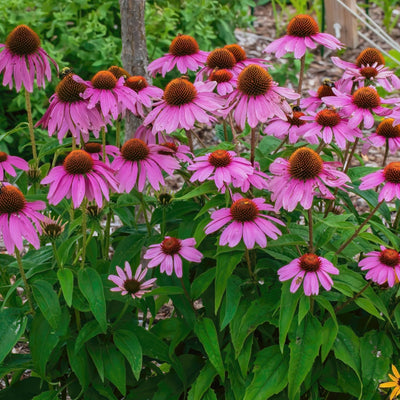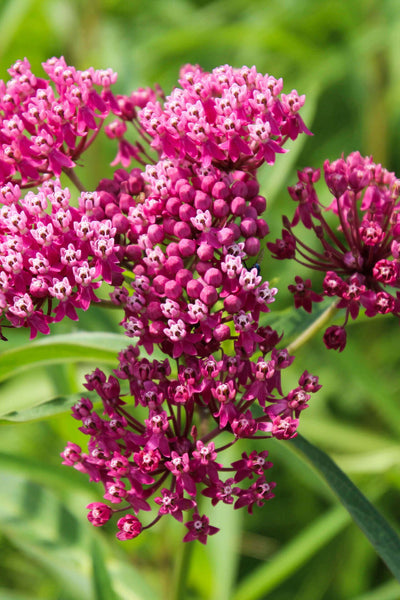Landscaping Without Spending a Dime? Here’s How
While many people enjoy landscaping their yards as a way to customize their outdoor space, there is a common myth that it costs a lot to do so. Fortunately, there are many other options available that do not involve a significant cost.
By having a self-sufficient mindset while also embracing creativity, it is entirely possible to convert a garden or backyard into an outdoor oasis without having to spend any money. These DIY projects are achievable by many homeowners.
This article will highlight several unique techniques that assist with enhancing a yard with no cost or budget. Having flexible materials as well as free materials available from nature allows one to create an amazing outdoor space that suits their needs without imposing any costs.
Make a Plan
This is the step where we will consider all the possible arrangements and choose the best one. It is really this simple: the more plans, the better. If the people using the plan stick to it for all 12 months, almost all the money and effort spent will not be wasted. And the best part is that each of these arrangements will definitely serve a purpose. There could be a work area for people planting, a playing area for the children, or other places that increase the beauty of the region.
Key Tips:
-
Use Shapes: Map the existing design of your yard, and then draw and place your plants, chairs, and pathways anywhere you want.
-
Don’t go overboard: Prioritize your bouquets or chairs so you do not overwhelm the area with too many pieces.
Weeding and Cleaning: A Free and Handy Upgrade
Cleaning simple things, like cleaning surfaces or putting things in their place, can instantly improve the way your landscape looks. A tidy yard automatically dresses up the yard. Cleaning up involves getting rid of the weeds and cutting out the overgrown plants so that the branches do not block the pathways and walkways. There is no cost for this, and this is why it makes such a difference.
Additional Steps
-
Prune your plants: Cut away one of the bad and damaged areas of your plants, and your plant will be healthier and will look better.
-
Edging your flower beds: Without investing in anything new, you can use the rocks, bricks, and pieces of wood that are already there to create a nice edge around the flower beds.
Divide and Conquer: Repotting and Transplanting Plants
If your garden has some established and healthy plants, consider dividing them. Many perennials lend themselves to being divided into multiple clumps and planted in new sites in your yard. This not only alleviates the issue of crowding, but also affords you additional plants to beautify other parts of your garden.
Plants that can be divided include:
-
Daylilies: In order to maintain plant health do divisions on intervals of three to five years.
-
Hostas: Hostas should be divided in the early spring or autumn to stimulate additional growth.
Natural Mulch: Free from Nature
In gardening, mulch improves the aesthetics of the garden, retains soil, and blocks the growth of weeds. Dry leaves, pine needles, and grass clippings can be used as mulch that is available for free. Scatter these around plants to reduce moisture loss and tidy the garden.
Advantages of Using Organic Mulch:
-
Moisture retention: This means you water the plants less frequently.
-
Weed control: Natural mulch prevents weeds from growing, so you have to spend less time weeding.
Custom DIY Planters and Containers
Rather than buying new containers or planters, why not have fun and use some creativity to repurpose some items lying around the house? Old buckets, crates, and some rusted furniture serve as excellent, customizable containers for some plants. Paint them, or use any other decorative items that go with the theme of the desired space, and voila! You have style.
Some examples could include:
-
Old tires: For raised beds, stack some tires and paint them.
-
Wooden crates: Rustic planters that can hold either vegetables or flowers.
-
Mason jars: Small jars that can grow herbs. Perfect for windowsills!
Repurpose and Upcycle: Gatsby’s Armchair
Walk around your yard and search for items that could be used in a fun project. It's a good way to use little to no money, while also gaining something of use. Old ladders can be turned into vertical gardens for climbing plants, while wooden pallets can be used as rustic dividers for flowers or even herbs.
Some examples of upcycled items include:
-
Broken pots: Instead of throwing them away, use them to create gardens that have mosaic pathways.
-
Old windows: They can be used to create decorative frames that can rest in a flowerbed or serve as garden walls.
Arrange Natural Pathways
Lay down stones, bricks, and even wood chips to form walking pathways through a garden. These walkways help to navigate through yards, while adding beauty to the area. There’s no need to purchase fancy stones; instead, utilize what’s available to you!
Here are a few ideas for pathways:
-
Stone pathways: Form a winding path by placing broken bricks and stone pieces in leftover patterns.
-
Wood chip trails: Clusters of wood chips line pathways to mark them.
Incorporate Wildlife-Friendly Features
Enhancing a landscape can invoke the help of birds, butterflies, and even beneficial insects. To help, assemble small water dishes under native blooms to provide a food source and habitat for beneficial insects.
Wildlife-Friendly Plants:
-
Pollinators will flock to the garden due to the vibrant coneflower.
-
Milkweed is a staple to help attract and provide habitat for the Monarch butterfly.
Vertical Gardening
If you are short on space, try vertical gardening. The use of light fences, walls, and trellises can help you grow climbing plants like morning glories, peas, and beans. This style adds vertical beauty to the garden while maximizing growing space.
Vertical Gardening Suggestions:
-
Hang old wire and trellises on plants. Repurposed items from the home can help steer the growth of the plants.
-
If you want a plant to grow upward, try cucumber, jasmine, and ivy. They all grow great in vertical gardens.
Plant Exchanges
Your garden can grow in a new, unique way without breaking the bank with swaps. If you and a neighbor both have extra cuttings, take the opportunity to share. Everyone wins in this arrangement.
Follow these example plants that can grow on their own:
-
To start growing spider plants, just cut off the offshoots and plant the roots.
-
To propagate a succulent, just cut the leaves and place them in the soil.
Fertilizers Can Also Be Made Out of Trash Through Composting
Instead of buying expensive, store-bought fertilizers, use leftover vegetable scraps, coffee grounds, and grass to make your own pots. Composting, an excellent means of adding nutrients to soil, can also be made from yard waste.
Composting has two primary advantages:
-
Soil enhancement: The compost improves the structure of the soil by adding organic materials.
-
Reducing waste: It helps in reducing the amount of waste that goes to the landfills.
Self Education
Not being able to spend money works to your advantage as it allows your mind to come up with new ideas to work with. Use it as a challenge to expand your knowledge on gardening through books, YouTube, and other websites and forums. It is said that knowledge is power, and in this case, it is power that will come in real handy when dealing with your outdoor space.
Final Thoughts: Begin Your Landscaping Voyage Now!
Improving your landscape without spending any money takes creative thinking and a desire to work. By using free resources, repurposing materials, and innovative thinking, you can transform your yard into an outdoor retreat.
Understand that outlining your outdoor space is a journey. From a big backyard to a small balcony, and with some effort and imagination, you can make the space feel very warm and welcoming. Everyone deserves to have a space that is uniquely theirs.
You can always check out TN Nursery for more ideas and plants for gardens! They are your go-to for anything that has to do with plants!
FAQs
What is the least expensive way to landscape?
The most straightforward strategy is to use the resources already available to you. Begin by clearing out the clutter. Weed the area, trim the plants, and clear the area of any debris. You can also separate out plants that you already have, make your own containers from materials that you have, and use dried leaves and grass cuttings to create your own organic mulch. You can also use vertical gardening, and swap with neighbors to diversify your garden without having to pay for anything.
What is the rule of threes in landscaping?
The rule of threes in gardening and landscaping pertains to the grouping of plants in odd numbers, most typically in threes, fives, or sevens. It helps the design to appear more balanced and more aesthetically pleasing. It helps to ensure the garden's symmetry is not overly formal. These clusters provide additional focal points that capture the gaze. Clusters of threes are more effective in commanding attention to the focal area.
What is the 70/30 rule in gardening?
Within the 70/30 rule in gardening, allotting 70% of your garden to greenery and 30% to flowering plants and other decorative plants is highly recommended. Having this much of the garden is essential in preserving harmony while also providing enough room to allow for ample flowering plants and seasonal blooms. Beyond that, this tends to make the upkeep of the garden much easier, and the landscape has a much longer life.
What is the least expensive landscaping material?
The lowest cost landscape materials are usually free landscaping materials found in nature in your own income property. Mulch for new gardens can be made easily from fallen leaves, grass clippings, and even wood chips. In case you’re building pathways, you can reuse broken stones or bricks from old buildings for pathways. The use of local landscaping materials for borders or raised beds, such as stones, soil, fallen trees, or even timber, is a great resource.
What is the golden ratio in landscaping?
The golden ratio landscaping is the shape of the land divided into three parts developed into triangles, which are divided with the proportions of 1:1.618. This ratio promotes balance and harmony in almost all landscape layouts, making the land feel appealing and natural. Plants, structures, or any other components of the garden can be placed based on the golden ratio, which helps with positioning.
What are the four common mistakes landscapers make when planting?
Do not forget these two fatal errors: not paying attention to the more mature size of the plant, and spacing them far too closely. The plant gains the most nutrients from the sun if it is located directly underneath. You might be surprised to learn that the plant, when mature, which is more suited to the surroundings, may not be the only one in your garden. You can solve these and other immediate surroundings by writing a plan and a list of plants in advance.



